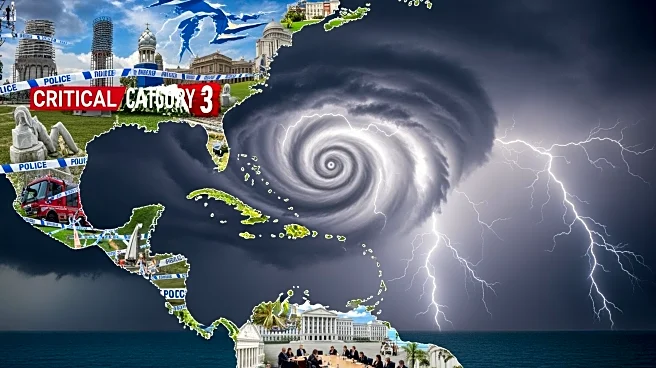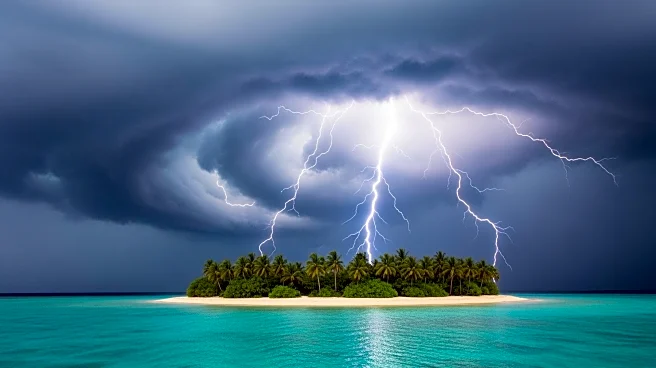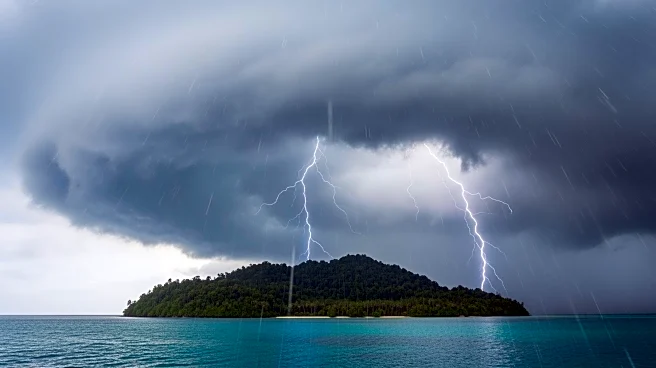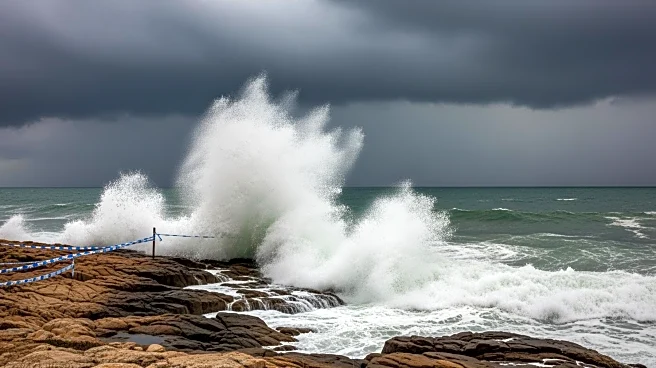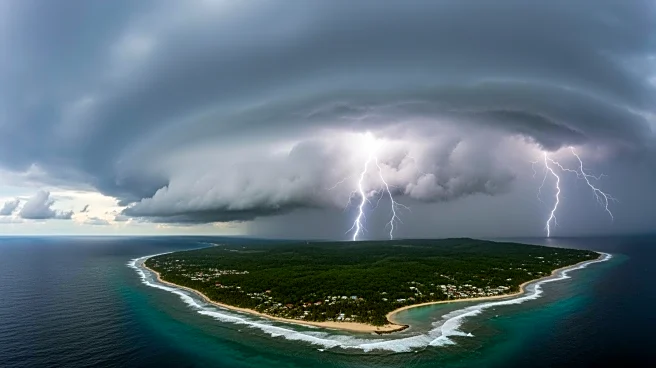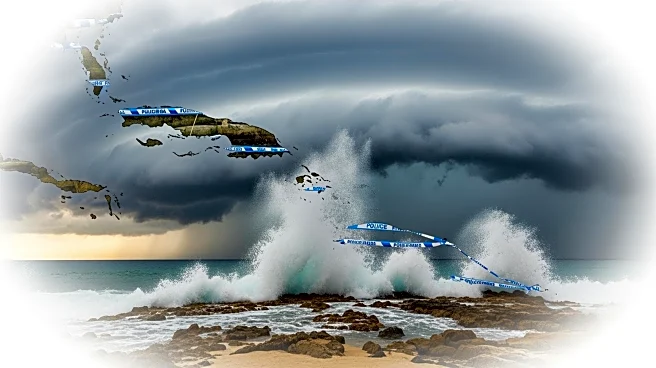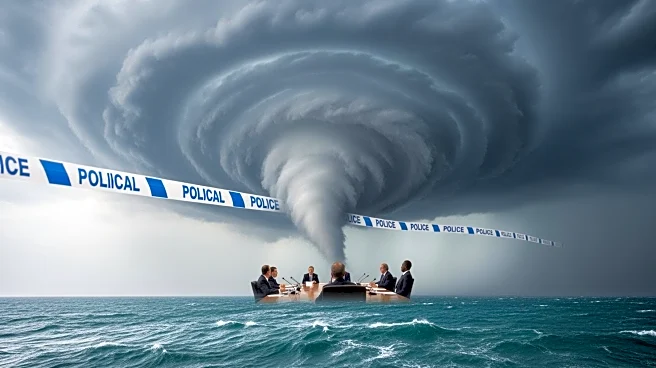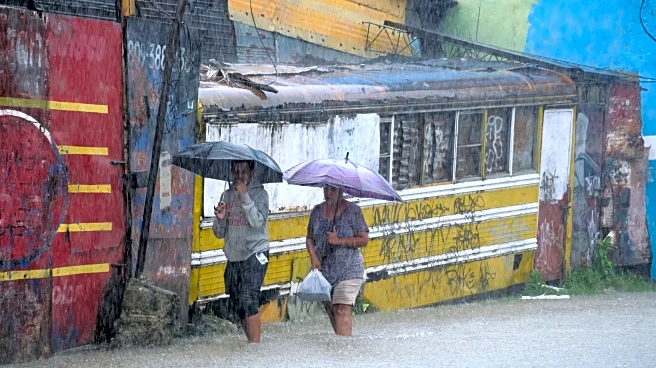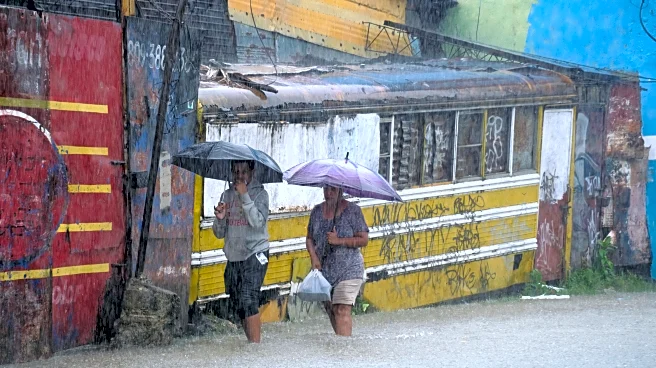What's Happening?
Hurricane Melissa has rapidly intensified into a Category 3 hurricane, posing a significant threat to the northern Caribbean, particularly Jamaica and southern Haiti. The storm is expected to bring torrential rains and potentially catastrophic flooding
and landslides. As of late Saturday, Melissa was located approximately 125 miles south-southeast of Kingston, Jamaica, with maximum sustained winds of 115 mph. The hurricane is moving slowly westward and is anticipated to strengthen further, potentially impacting Cuba by mid-week. The storm has already resulted in the deaths of at least three individuals in Haiti and one in the Dominican Republic, with additional reports of missing persons and injuries. Jamaican authorities have activated over 650 shelters and are preparing for emergency food distribution, while the Cuban government has issued a hurricane watch for several provinces.
Why It's Important?
The intensification of Hurricane Melissa poses a severe risk to the Caribbean region, with potential widespread impacts on infrastructure, agriculture, and local economies. The slow-moving nature of the storm increases the likelihood of prolonged rainfall, exacerbating the risk of flooding and landslides. This could lead to significant humanitarian challenges, including displacement and food insecurity. The storm's trajectory also threatens to disrupt air travel and other essential services, as seen with the closure of Kingston's Norman Manley International Airport. The broader implications for the U.S. include potential impacts on trade and aid efforts in the region, as well as the need for coordinated disaster response and relief efforts.
What's Next?
As Hurricane Melissa continues its path, authorities in the affected regions are on high alert, preparing for the storm's landfall and its aftermath. Emergency services are mobilizing resources to assist affected communities, and international aid may be required to support recovery efforts. The storm's progression will be closely monitored by meteorological agencies, with updates on its path and intensity expected in the coming days. Stakeholders, including governments and humanitarian organizations, will need to coordinate their responses to mitigate the storm's impact and provide necessary assistance to those affected.
